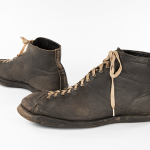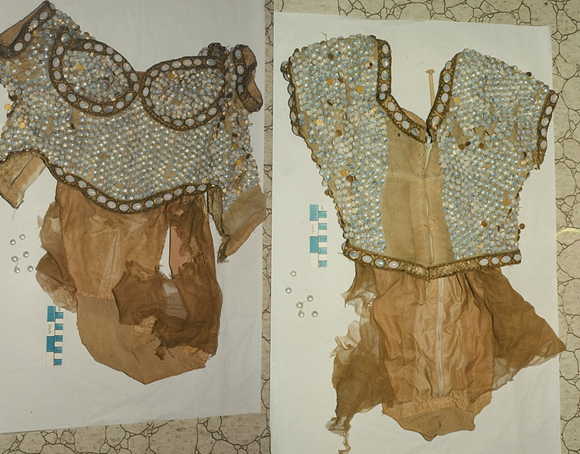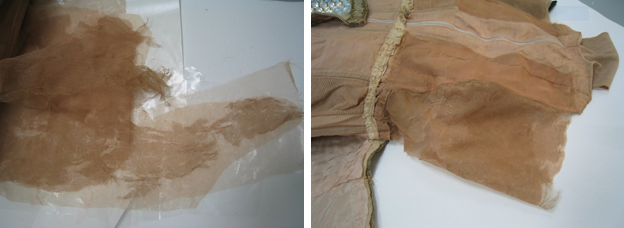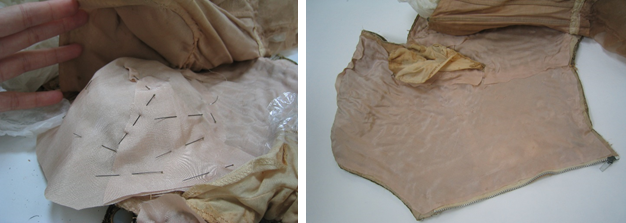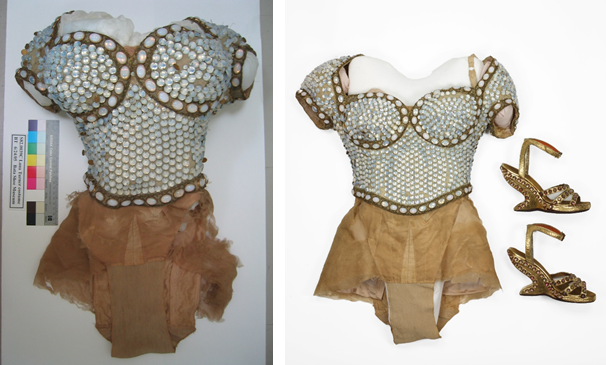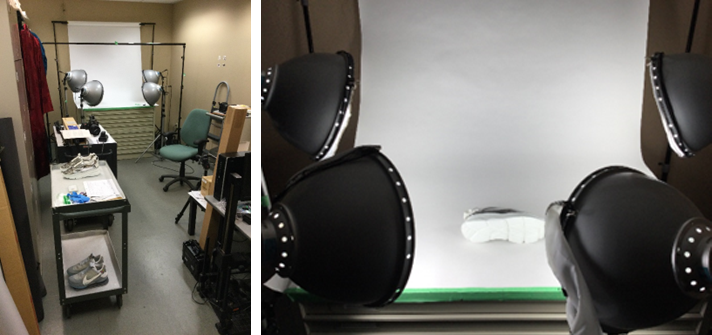This blog continues to explore projects undertaken by interns at the BSM conservation lab. In 1982, the museum acquired one of several outfits, with matching shoes, made for Lana Turner when she starred in the 1955 MGM movie The Prodigal. The costume was composed of a heavily beaded silk bodice with silk pant-skirt attached. The bodice lining was torn and beads had either fallen off or were loosely dangling; the silk of the skirt was disintegrating; the shoes were worn but in stable condition. Because of the outfit’s poor condition, all the loose beads were collected from the shipping box, the outfit was padded with unbuffered acid free tissue and stored in an archival box until treatment could be performed.
In 2001, a conservation intern researched treatment options and wrote a detailed report with their recommendations but, unfortunately, there was not enough time in their placement to undertake the project. In the summer of 2005, a conservation student at New York University came to Toronto to work at the BSM as part of the practical component of their program. They reviewed the previous recommendations, sourced the materials, prepared a work plan and submitted a budget. The double layered silk chiffon skirt was conserved first as it was the most fragile element of the outfit. The creased and distorted hip coverings were humidified to bring the fabric back to its original shape. Silk crepeline, an extremely fine fabric similar to chiffon, was dyed with Earl Grey tea to achieve a good colour match; hair silk thread for sewing was dyed at the same time. The crepeline was then coated with an adhesive which was allowed to dry. A template of the skirt was used to cut the crepeline to size, then it was interleaved between the two existing layers. After positioning, the adhesive was solvent vapour activated. The areas of chiffon loss were filled with the dyed crepeline (without adhesive) and hand stitched in place with the hair silk.
Left: Positioning fragments of silk chiffon skirt over the adhesive impregnated backing fabric. Right: The slow process of rebuilding the hip coverings.
The bodice was lined with a similarly dyed thin plain weave silk, held in place with entomology pins, then stitched to the original silk with a small curved needle. Once the fabric components had been stabilized the beads were attached with the hair silk. The new lining provided much needed support for the very heavy beads. Loose beads were placed in areas of prominent loss. After treatment was completed, a support was carved from Ethafoam, lightly padded and covered with a cotton stretch knit fabric. This mount could also be used if the garment were to go on display in an exhibition.
Left: Securing the Chinese silk to the back of the bodice; note the curved needle used for stitching the support to the original. Right: New lining completed. From start to finish the entire project took two months. The end result is a significant and much needed stabilization, making it easier to understand what the garment was meant to look like when worn and preserving it for future examination and display.
Before and after photos. You can see where loose beads have been added to the bustier.


